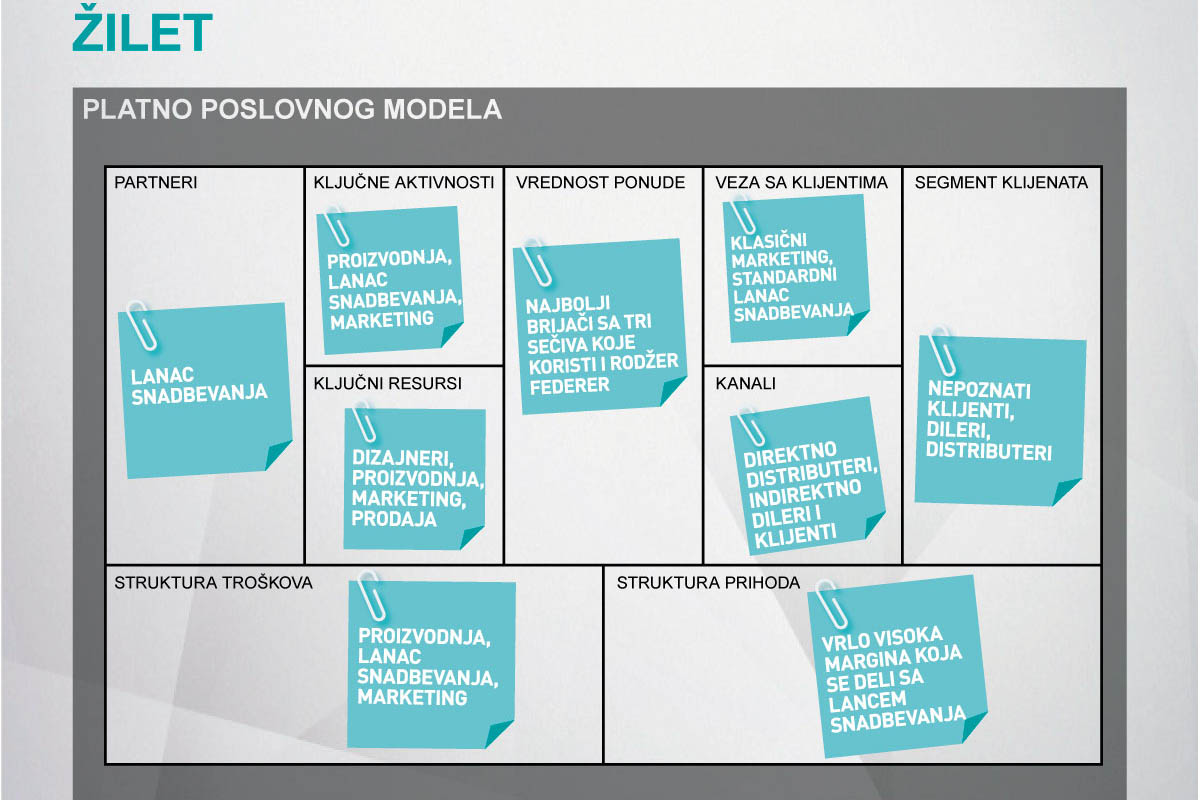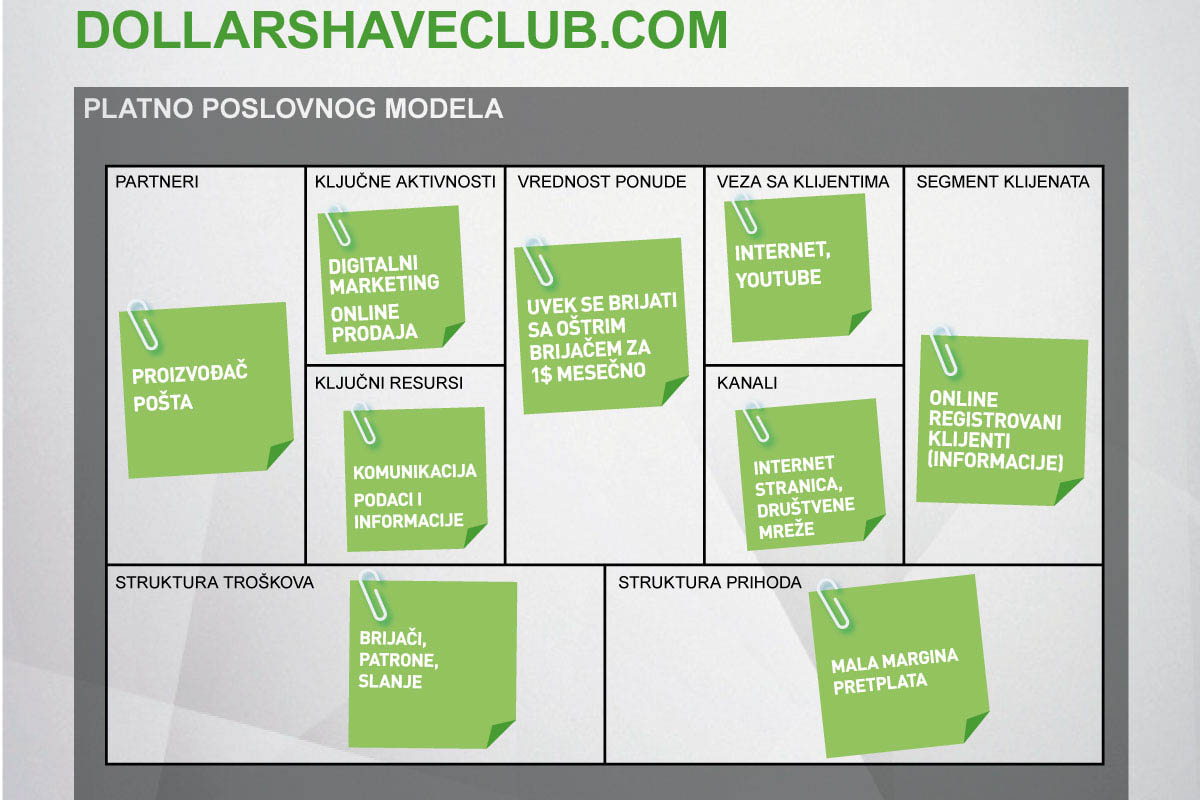
Mnoge od novih startap firmi koriste isključivo Internet kao kanal za većinu poslovnih aktivnosti, jer je mnogo manje inicijalno ulaganje a samim tim i rizik, a lako je svoje rešenje ili uslugu ponuditi na globalnom tržištu.
Jasno je da digitalna revolucija utiče na promenu poslovanja i da treba preduzeti aktivnosti u odbranu položaja na tržištu, margine i profita, ali nije baš jednostavno odrediti kako. Najjednostavnije i najčešće se digitalna transformacija prenosi na IT odelenje i oni uvode Internet kao dodatni kanal za neke poslovne aktivnosti, uglavnom marketing i ponekad prodaju. Poslovno gledano sav prihod i dalje dolazi od starog načina rada i nema stvarnih promena, a ko voli promene? Izgovor je da industrijska grana u kojoj posluje kompanija nije pod uticajem digitalne ekonomije i još dugo neće biti.
Ovo se često čuje kada počnemo razgovor o digitalnoj revoluciji, transformaciji i promeni koja neminovno sledi za sve industrijske grane. Digitalna transformacija je proces analize i razmatranja kako unaprediti i promeniti svih 9 elemenata na platnu poslovnog modela i kako ih sve ukomponovati da se kreira novi poslovni model koji će omogućiti rast u digitalnoj ekonomiji.
U prethodnom delu smo govorili o vrednosti ponude za različite segmente klijenata a ovo je sledeći korak u procesu inovacije poslovnog modela koji se odnosi na kanale za komunikaciju, marketing, prodaju, snabdevanje, podršku i održavanje i sve druge poslovne aktivnosti. Kanal jeste važan korak u inovaciji poslovnog modela ali samo kao deo sveobuhvatnog razmatranja svih 9 elemenata u platnu poslovnog modela.
Internet je postao novi i vrlo značajni kanal za većinu poslovnih aktivnosti. U nekim slučajevima, kao što je komunikacija (emejl, poruke, razmena fotografija i kratkih filmova), dostup do vesti, informacija, kupovina avionskih karata, rezervacija hotela, razne vrste plaćanja sa računa u banci, kupovine i mnoge druge Internet je dominantni kanal. Poslednje analize pokazuju da je preko 90% kupovina avio-karata povezana sa internetom kroz detaljan pregled i uporedjivanje ponuda na internetu, uključujući i one koje se ne završavaju na internetu. Mnoge od novih startap firmi koriste isključivo Internet kao kanal za većinu poslovnih aktivnosti, jer je mnogo manje inicijalno ulaganje a samim tim i rizik, a lako je svoje rešenje ili uslugu ponuditi na globalnom tržištu.
POREDJENJE INDUSTRIJSKOG I DIGITALNOG POSLOVNOG MODELA
Ako se posmatra industrijski – cevni poslovni model onda je lako analizirati i proceniti koliko je takav model zavisan od komplikovanog i vrlo skupog lanca snabdevanja i kolike su marže, ako se poredi proizvodna i prodajna cena. Majk je iskoristio činjenicu da proizvodna cena jedne rezervne patrone iznosi par centi a da u maloprodaji isti proizvod u pakovanju od tri ili pet patrona dostiže cenu od 15 pa i 20 dolara.
Jedan od razloga zašto je razlika u ceni tako velika su ogromni troškovi lanca snabdevanja od proizvodjača preko distributera pa do prodavca. To je Majk Dubin iskoristio da postane onlajn konkurent Žiletu, koji je vlado svetskim tržištem. Na slici je prikazan poslovni model Žileta. Samo uvodjenjem prodaje preko interneta, kojim je zamenio distributere i dilere, on je bio u stanju da značajno smanji cenu i tako poveća vrednost ponude.

U poslovnom modelu Dollarshaveclub.com su predstavljene sve promene koje značajno utiču na vrednost ponude:
1) Cena je značajno smanjena zamenom dela lanca snabdevanja internetom kao kanalom za veliki broj poslovnih aktivnosti: marketing, prodaja i podrška kao i komunikacija sa klijentima.
2) Preveo je prodaju u pretplatu tako da klijenti dobijaju svaki mesec pet rezervnih patrona i time rešavaju problem da ako zaborave da kupe nove patrone moraju da se briju sa starim, tupim patronama. Sa aspekta vrednosti kompanije pretplata donosi povećanje vrednosti firme i omogućava bolje planiranje.
3) Umesto prodaje nepoznatom klijentu kroz distributere i dilere Majk prodaje direktno klijentima i dobija od njih niz značajnih podataka od imena i adrese do podataka o načinu plaćanja. Ovo menja u mnogome poslovne aktivnosti jer se otvara direktna komunikacija sa korisnikom, olakšava uvodjenje novih proizvoda u prodajni program i omogućava direktni i personalizovani marketing
4) Podaci koji se sakupljaju o klijentima i prodaji su dobra osnova za dobijanje informacija o frekvenciji prodaje, konverziji posetilaca na internet stranici u potpisnike pretplate, o uspešnosti različitih aktivnosti digitalnog marketinga i mnoge druge analize o uspešnosti marketinga, prodaje i podrške.
5) Promenio je partnerski ekosistem jer proizvode nabavlja direktno od proizvodjača
6) Za dostavu klijentima se koriste partneri kao što je pošta ili neka druga organizacija za dostavu robe.

Pored vrednosti ponude neophodno je analizirati kako se menja segment klijenata koje Majk adresira ovom ponudom i da li je to dovoljno za njegove planove rasta i budućeg razvoja. Po svim ocenama to je segment koji raste brže od segmenta Žiletovih klijenata mada je mnogo manji. Iz statistika prodaje vidi se i da polako klijenti koji su kupovali Žiletova proizvode u prodavnicama prelaze na Internet kupovinu pa je u 2016. prvi put smanjen udeo Žileta na američkom tržištu dok je Internet prodaja rasla gde Dollarshaveclub.com ima vodeću ulogu. Majkova investicija u ovaj projekt je bila minimalna. Proizvodnja video reklameje koštala 4,500 dolara ali je video postao viralan i postigao veliki uspeh na jutjubu sa milionskim brojem pregleda. U prvih 48 sati 12,000 pretplatnika se registrovalo i naručilo pretplatu što pokazuje uspeh videa ali i da je u poslovnom modelu dobro izabrao i objasnio vrednost ponude potencijalnim klijentima.
Ako bi se otvorila nova kompanija, koja bi konkurisala Žiletu po klasičnom industrijskom modelu, neophodna bi bila investicija od više milijardi dolara, uz vrlo visok rizik od neuspeha i sa malim šansama za uspeh. Snagom digitalnog modela i uz minimalnu početnu investiciju Dollarshaveclub.com je uspeo da uspešno konkuriše na delu tržišta.
Iako Žilet ima finansijska sredstva i kapacitete ne može lako da odgovori na ovaj izazov jer bi svaka akcija koja uključuje smanjenje cena direktno ugrozila marže koje oni postižu danas, ugrozila bi čitav ekosistem koji su oni godinama razvijali i dovela bi u pitanje partnerski odnos sa mnogim u lancu snabdevanja. U pitanju bi bio i veliki broj radnih mesta u Žiletu ali i kod partnera, a bilo bi teško i zahtevalo bi puno vremena i ulaganja da se promene poslovni procesi i kulture zaposlenih. I na kraju neophodno bi bilo promeniti i kompletne IT sisteme i infrastrukturu jer su fokusi i prioriteti potpuno različiti. Uvodjenje klijenata u centar i fokusiranje na prikupljanje podataka o njima i njihovim aktivnostima iz osnove menja arhitekturu sistema.
Organizacija i kultura ove dve firme je potpuno različita na osnovu različitih poslovnih modela, pa tako Žilet planiranje, proizvodnju, organizaciju, marketing, prodaju smatra korporativnim funkcijama i ima veliki broj zaposlenih koji vode i upravljaju poslovanjem, dok Dollarshaveclub.com veliki broj poslovnih aktivnosti obavlja sa malim brojem ljudi koristeći Internet ili partnere. Iz ovog primera može se videti kako se dramatično menja klasična organizacija i struktura kompanija i postavlja se pitanje svrhe kompanija u takvom obliku ako mnoge poslovne aktivnosti i funkcije mogu da se odvijaju na internetu uz mnogo manje troškove i organizaciju.
Jedno od mogućih rešenja za Žilet je model dva brenda gde se otvara potpuno novi brend koji se fokusira na rešenje za digitalnu ekonomiju, stari brend se optimizuje i fokusira na maksimalne profite dokle god je to moguće. Oba brenda mogu da koriste neke zajedničke resurse, partnere i procese u cilju što bržeg razvoja digitalnog brenda uz optimizaciju starog i ukupnog povećanja vrednosti kompanije.
Novi brend može da bude povezan sa starim ali ne mora, to je marketinška odluka. Opasnost je da ako su povezani tada disrupcija starog brenda može da bude brža jer klijenti koji veruje u kvalitet starog brenda mogu da se brže odluče na prelazak na novi brend.
Pred kraj 2016 godine Majk i njegovi akcionari su prodali Dollarshaveclub.com Unilever-u za milijardu dolara tako da sada postoji još veća opasnost po Žiletovu prodaju ako Unilever nastavi da razvija digitalni poslovni model.
DRUGI PRIMER
Američka kompanija Varbi Parker je uvidela da u poslovanju sa naočarima firma Luksotika iz Italije kontroliše 80% tržišta kroz brendove kao što su Rej Ban, Prada, pa i Sanglas Hat i Lenskrafters i da tako kontroliše marže koje su vrlo visoke. Luksotika je imala promet u 2016 od preko 9 milijardi evra i zaista podseća na Žilet. Osnivači Varbi Parkera Gilboa and Blumental su krenuli sličnim putem kao i Majk i počeli su proizvodnju naočara i prodaju preko svoje Internet stranice. Njihova vrednost ponude je u tome da za mnogo manje novca nude moderne i kvalitetne naočare preko internet prodavnice i da šalju do 5 ramova klijentima na probu. One ramove koje klijent ne želi može da vrati besplatno. Od samog početka su bili uspešni zbog dobrog dizajna, cene i podrške poznatih ličnosti ali su uvideli da su im neophodne i prodavnice, fizički kontakt sa klijentima. Počeli su u dnevnoj sobi jednog od osnivača, pa su zatim prepravili jedan autobus koji je služio kao prodavnica obilazeći razne delove grada. Kada su i tako potvrdili neophodnost direktnog kontakta sa klijentima, uz Internet kao kanal, počeli su da otvaraju prodavnice širom SAD i broj prodatih naočara je rastao velikom brzinom.
Luksotika pokušava da odgovori na ovaj izazov kupovinom kompanije Glasses.com koja u mnogome liči na Verbi Parker po cenama, načinu rada i modelu prodaje i čak ima 3D mobilnu aplikaciju koja omogućava virtualno probanje naočara i po ocenama korisnika bolja je od sistema koji nudi Verbi Parker za istu svrhu. Luksotika je otvorila i lanac prodavnica Perle Vižen koji podseća na prodavnice Verbi Parker. Oni primenjuju strategiju dva brenda i plan im je da zaustve brzi rast firme Verbi Parker a istovremeno da sačuvaju svoju dominatnu poziciju na tržištu.
Gilboa i Blumental su izjavili da prate šta Luksotika radi ali da nisu zabrinuti, a kao razlog su naveli da Luksotika ima ogromnu organizaciju i strukturu troškova koja prodržava njihovo sadašnje uspešno poslovanje i ako bi želeli da konkurišu direktno (da promene poslovni model cele Luksotike po modelu Verbi Parkera) da bi kanibalizovali njihovu sopstvenu prodaju mnogo više i brže nego što bi ugrozili Verbi Parkerovo poslovanje. Mnogo toga može da se prenese i na Žiletov model.



